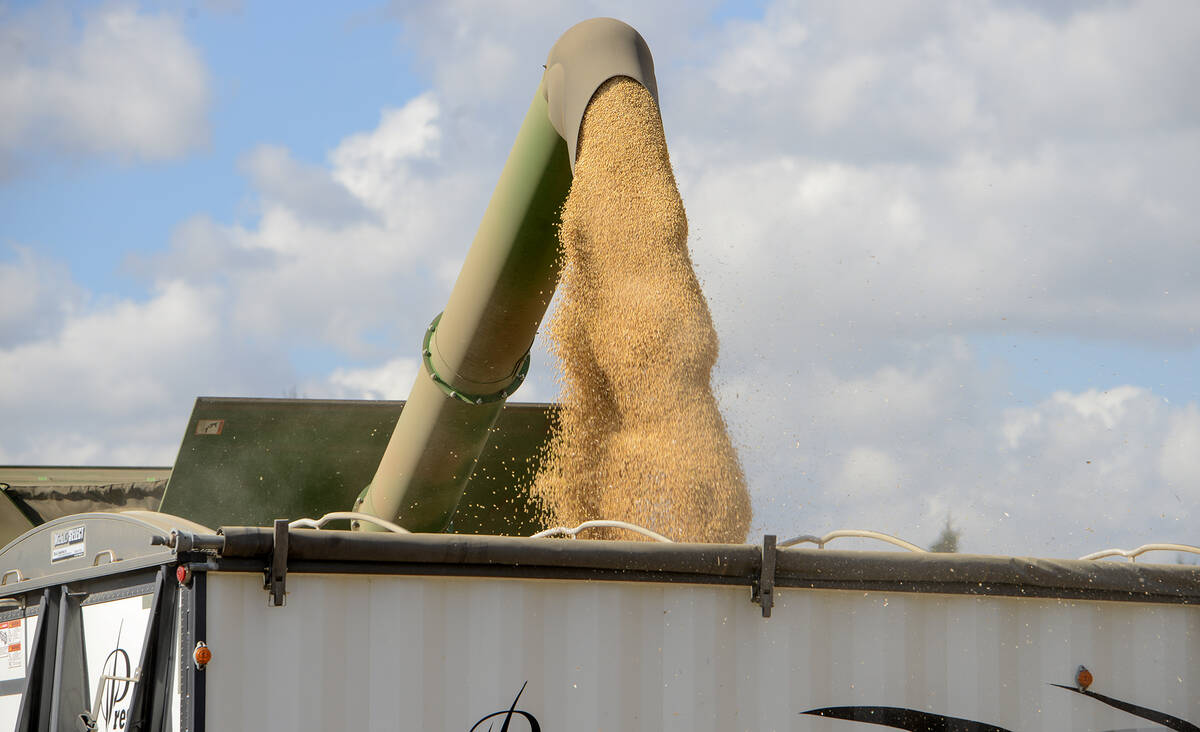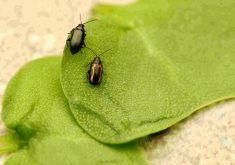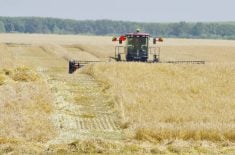Canola, like its northern European ancestors that were introduced here decades ago, is a cool-season plant.
It’s not happy with really hot weather, especially from the time it bolts to the time it finishes flowering. With the Prairies getting warmer, farmers need to consider what higher summer temperatures might do to one of their most important crops.
“The effects of temperature and moisture stress on yield really depend on when they occur during the life cycle of canola,” Malcom Morrison, of Agriculture and Agri-Food Canada, said during the Manitoba Agronomists’ Conference earlier this winter. “For example, cold stress or heat stress during emergence can kill seedlings. Heat greater than 29.5 C during flowering or bolting reduces seed yield.”
Read Also

Grain markets hungry for U.S. data
The U.S. government shutdown meant that futures markets were left without robust grain supply information
Climate models presented by Climate Change and Environment Canada present a window into the future we might see on the Prairies in terms of temperature and precipitation. They developed two greenhouse gas emission scenarios, the first is a continuing high-emission model.
“The high-emission scenario, or what I call the ‘Business as Usual’ scenario, assumes that we do not do anything to get our emissions under control and that we have continuous production of carbon or release of carbon into our atmosphere,” Morrison said. “By 2050, temperatures will be 2.3 C warmer and by 2100, 6 C warmer.”
While Morrison says we may be able to cope with an increase of 2.3 C, we will not be able to handle 6 C. In the low-emission scenario, with emissions back under control and held down to 2006 levels, we may only see an overall increase of 2.0 degrees by 2050 and that remains stable all the way to 2100.

“So what does that do for overall climate change on the Prairies?” he asked. “Our summers are going to get warmer and growing seasons will increase for crops, weeds and pathogens. Precipitation will become more variable and we’ll get longer periods between precipitation events. The soil moisture deficit will increase across the Prairies as temperatures increase and precipitation remains about the same.”
So what does this mean for the canola industry? Can a cool-season plant cope with a warmer summer and still be productive? Morrison hoped to find out and started by growing an older variety — Westar — in growth cabinets to test the response to cool or hot temperatures.
- Read more: Pollinators key to crop success
“I grew those plants to maturity in those cabinets and I found that heat stress begins as early as bolting and lasts all the way to the end of flowering,” he said. “Heat stress generally results in fewer fertile pods per raceme and fewer fertile seeds per pod.”
The next step was to test the mechanisms of heat stress to see what happens to the plant during a heat blast. This was done by growing different sets of plants in ‘cold’ cabinets or ‘hot’ cabinets. Hot and cold plants were cross-pollinated with hot or cold pollen.
“So we have male pollen and a female stigma,” Morrison said. “The most success occurred when we took a cold pollen and put it on a cold stigma and produced 16 seeds per pod on average. Hot pollen on a cold stigma was also successful but there were fewer seeds. The worst-case scenario was when we took hot pollen and we put it on a hot stigma and this resulted in fewer successful crosses and far fewer number of seeds per pod on average.”
The growing tank experiments showed that heat stress caused a breakdown in communication between the pollen grain and the stigma. The stigma couldn’t recognize the pollen grain so fertilization couldn’t take place. Since this was done with Westar canola the next question was: Would this happen the same way with all other canola strains?
“I got 50 different varieties of canola and I grew them in a growth cabinet,” Morrison said. “When they bolted, I transferred them to a hot cabinet and I let them stay there for two weeks and then transferred them back to a cold cabinet to resume their life cycle.”
Of the 50 varieties tested, 15 had greater raceme fertility and produced more seeds than Westar. Twenty-one had similar raceme fertility and 14 were worse. He now had a distribution of heat-tolerant species that plant breeders could use to increase canola performance from bolting to flowering in hotter summers.
“We also found that new canola hybrid varieties were more heat stress tolerant than the older open-pollinated types,” Morrison added. “Now how about the field? You know it’s great doing this work in a growth cabinet but it doesn’t apply to the field.”
From the cabinets he and his field crew set up a three-year field experiment in Ottawa. They seeded plots on three different dates so each would bolt and flower in different temperature regimes. At flowering they went into the field and counted the number of flowers per raceme and tagged them. At harvest they looked at the plots for yield.
“What we found was very interesting,” he said. “We developed what we call the ‘Heat Stress Unit Concept.’ We took maximum daily temperature and subtracted the temperature where heat stress began (29.5 C) and we could sum that over the flowering period.”
If the day’s high temperature was 34 C and the heat stress temperature is 29.5 C then you had 4.5 heat stress units that day. Now they could add every day’s heat stress units into a grand sum from bolting to flowering and then plot it against each day’s seed production. They found that as the heat stress units increased the yield decreased in a linear fashion.
He summed up by saying that temperatures greater than 29.5 C from bolting to flowering cause heat stress and this disrupts communication between the stigma and the pollen. Cultivars can be screened for heat stress tolerance in a growth cabinet.
“Yield decreases by about four per cent per heat stress unit and this was the same for napus, juncea and Brassica rapa,” Morrison said.















